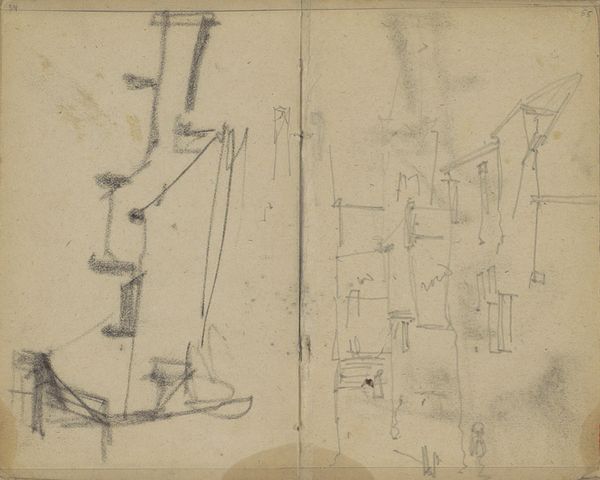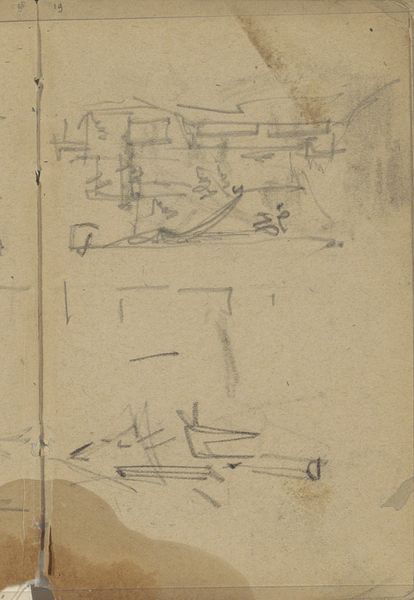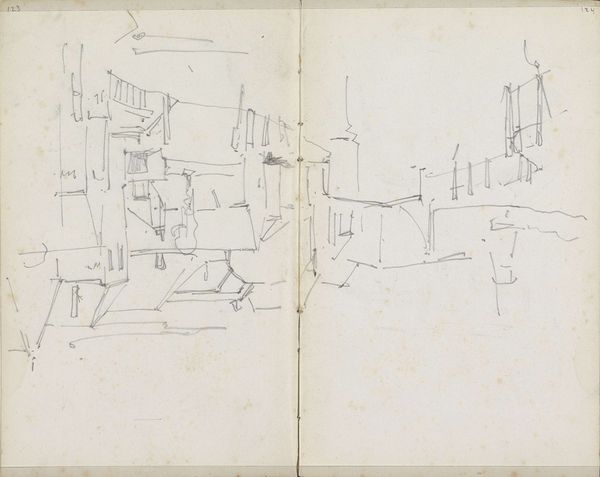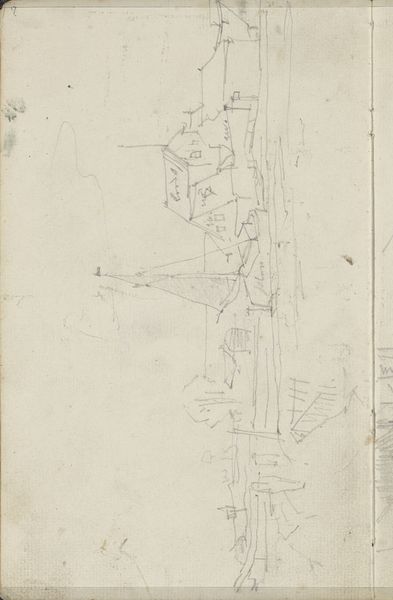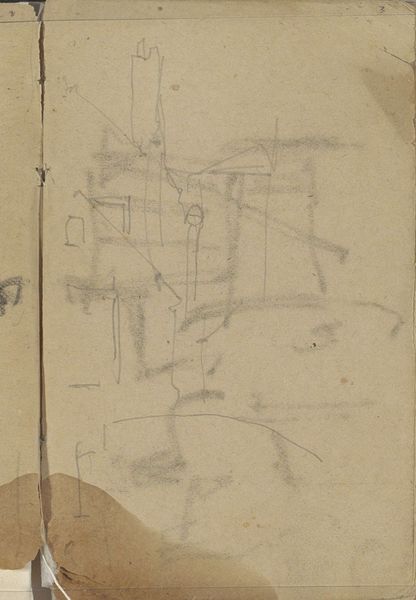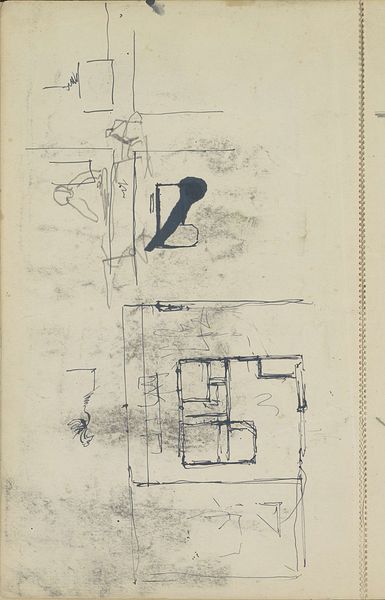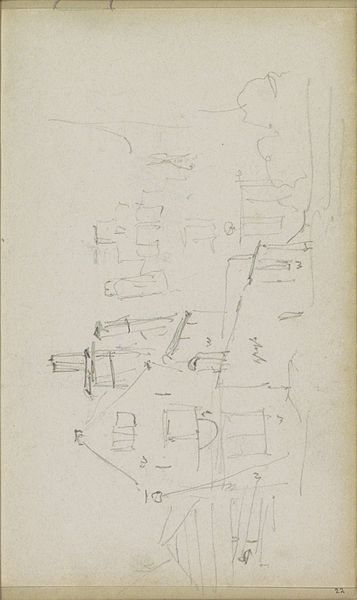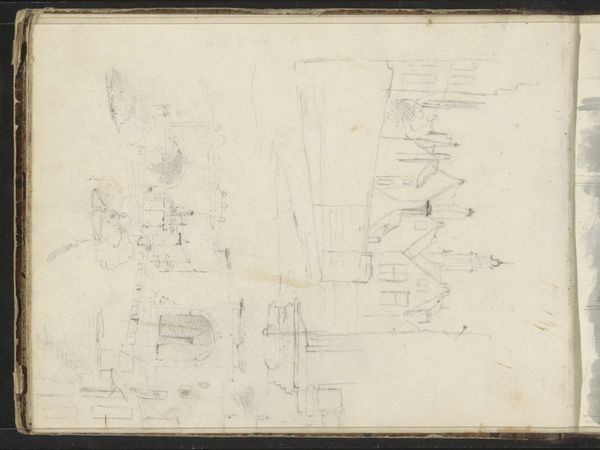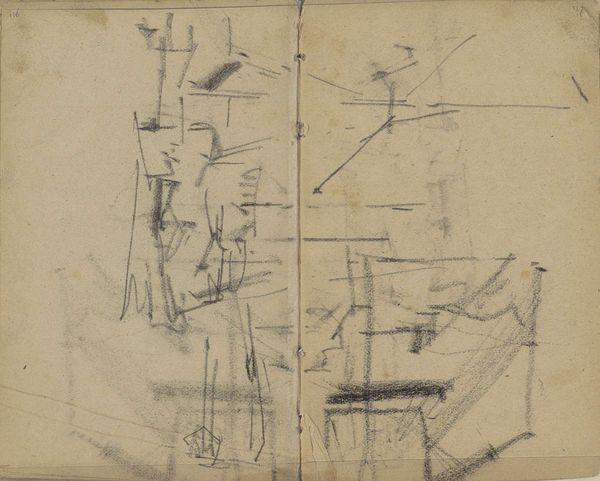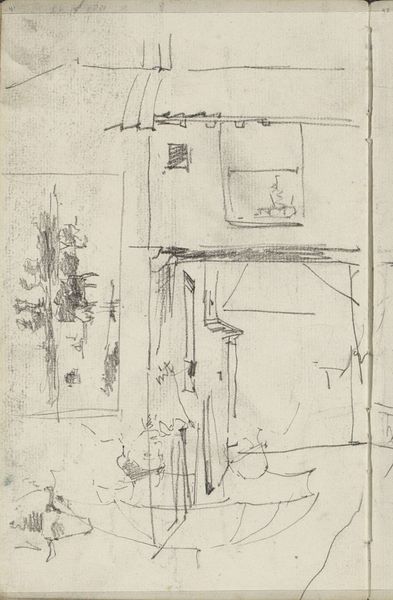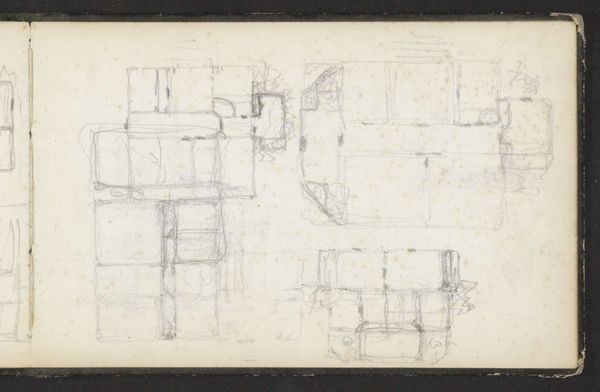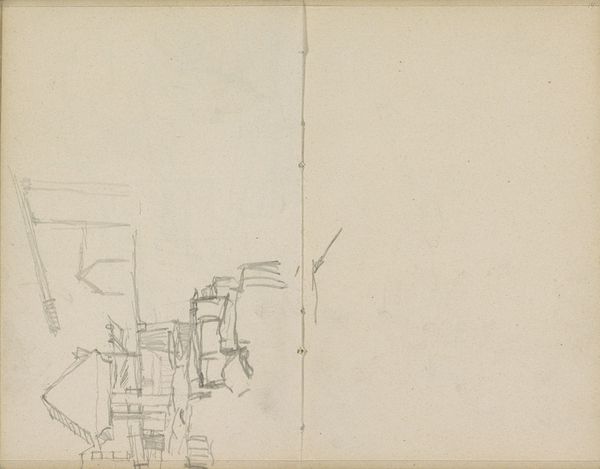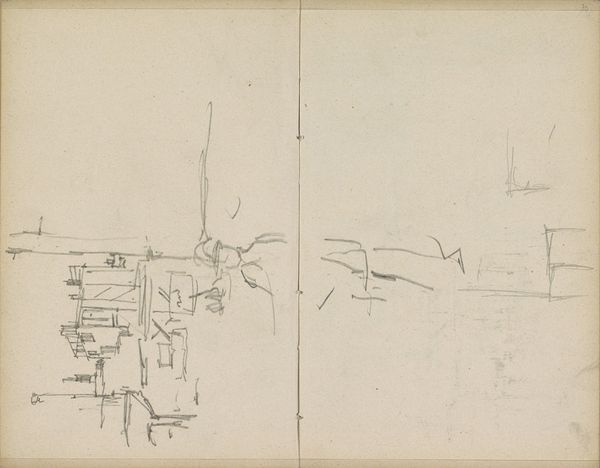
drawing, paper, pencil
#
drawing
#
aged paper
#
impressionism
#
sketch book
#
incomplete sketchy
#
hand drawn type
#
landscape
#
paper
#
personal sketchbook
#
sketchwork
#
hand-drawn typeface
#
fading type
#
pencil
#
line
#
sketchbook drawing
#
cityscape
#
sketchbook art
#
realism
Copyright: Rijks Museum: Open Domain
Curator: This drawing, simply titled "Stadsgezicht", or "Cityscape", was created by George Hendrik Breitner between 1881 and 1883. It's a pencil sketch on paper, part of a sketchbook, and it's currently held here at the Rijksmuseum. What are your initial thoughts? Editor: It feels like a ghost of a city. There's a certain transience to the lines; it feels like something glimpsed fleetingly from a train window, an impression of urban life. The sketchy nature of it really adds to that ephemeral quality. Curator: Absolutely. Breitner was fascinated by the gritty reality of city life, particularly in Amsterdam. He moved away from idealized representations to capture the dynamism and, in many ways, the alienation of the modern urban experience. His work sits at an interesting crossroads in the art world, reflecting both Impressionist and Realist sensibilities, depicting reality as he perceived it through his own subjective experience. Editor: That's fascinating, because there is such an immediacy to the work. It captures not just the structures of buildings, but a sense of urban space itself as fragmented and constantly shifting. Do you think the lack of finish is itself a comment, perhaps unintentional, on the lived reality of urban populations experiencing relentless changes, or urban decline? Curator: It’s plausible. Breitner was documenting rapid transformation. But, to push back slightly, sketchbooks in this period can reveal insights to an artist's creative process: initial thoughts and impressions before committing to a final work. Sketchbooks offered freedom in portraying ordinary people, not paragons, to wider audiences, an implicit acknowledgement of new visibility. The sketch as a statement of its own reflects emerging social trends, and breaks away from academic artistic styles. Editor: It’s like Breitner invites us into the heart of artistic process and asks us to consider not the city complete but the potential it holds; for better, or, as some argue from the time period suggest, for worse. Curator: Exactly. And it speaks to the powerful and important legacy of George Hendrik Breitner's place in Amsterdam's historical understanding of art, cultural, and social themes of this time period. Editor: This glimpse of urban existence as a set of fleeting, interlocking shapes, has encouraged me to see the city in a new, deconstructed, light, a reflection, almost of society’s structure.
Comments
No comments
Be the first to comment and join the conversation on the ultimate creative platform.
